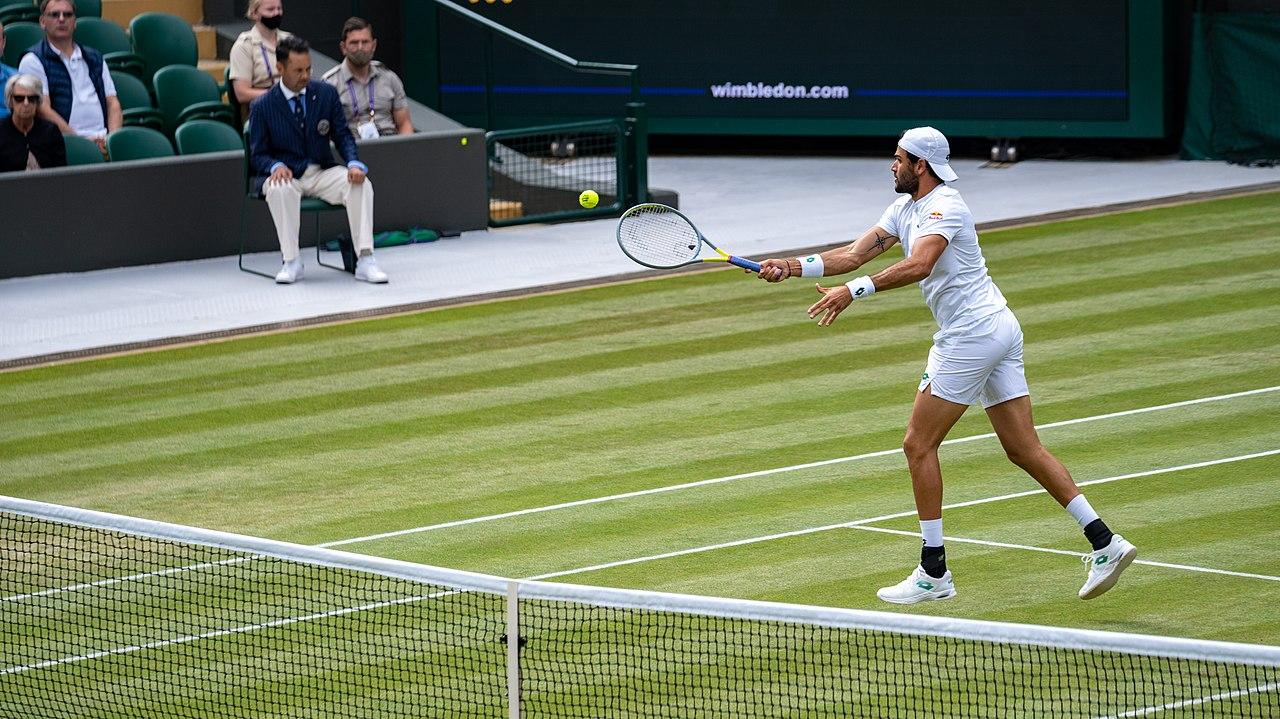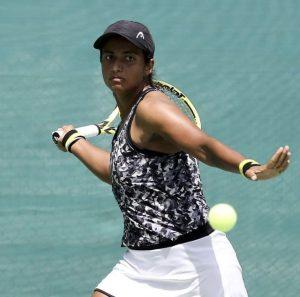We may earn money or products from the companies mentioned in this post.
A Quick Summary

Tennis is a popular sport played by two or four players using rackets to hit a ball over a net. Match length is affected by the type of competition, format variations, and player styles and strategies. Notable long matches in tennis include the evolution of the scoring system, the introduction of the tiebreak system, and the most famous lengthy match between John Isner and Nicolas Mahut at Wimbledon in 2010. Match duration varies depending on the level of competition, surface type, gender, and technological advancements. Men tend to play longer matches due to playing best-of-five sets at Grand Slam events, while the Hawk-Eye system and unlimited player challenges have helped streamline matches.
Brief Overview of Tennis Matches

Tennis is a popular sport played worldwide and involves two or four players hitting a ball back and forth over a net Matches can be played in singles or doubles format, with each player using a racket to hit the ball into their opponent’s side of the court The goal is to win points by making it difficult for the opponent to return the ball within the boundaries of the court
Professional tennis matches are usually played in a best-of-three or best-of-five sets format, with each set consisting of six games In order to win a set, a player must win at least six games while leading by at least two games If both players reach six games each, they go into a tiebreaker where they play until one player reaches seven points with a margin of two points
Importance of Understanding Match Length

Understanding match length is important for both players and spectators as it affects various aspects of the game For players, knowing how long a match will last allows them to plan their energy expenditure and strategize accordingly A longer match means more physical exertion and mental focus, so pacing oneself becomes crucial to avoid burnout
For spectators, knowing the expected length of a match helps them plan their day around watching it live or tuning in on T It also affects their level of engagement during the match as longer matches tend to have more twists and turns that keep viewers on edge
In addition, understanding match length can provide insights into player performance and stamina levels Players who consistently perform well in long matches may have superior endurance compared to those who struggle once matches extend beyond three sets
Conclusion
In conclusion, tennis matches come in different formats with varying lengths depending on whether they are played in singles or doubles and the number of sets required to win Understanding match length is important for both players and spectators as it affects energy expenditure, strategy planning, engagement levels, and provides insights into player performance
| Key Point | Description |
|---|---|
| Energy Expenditure | Longer matches demand more physical exertion and mental focus, affecting player stamina. |
| Strategy Planning | Knowing match length helps players plan their game strategies and pace themselves accordingly. |
| Player Performance Insights | Consistent performance in long matches may indicate superior endurance compared to other players. |
Factors Affecting the Length of a Tennis Match

Tennis matches can vary greatly in duration, from quick and decisive matches to epic battles that last for hours Several factors come into play when determining how long a match will take, including the type of competition, format variations, and player styles and strategies
Type of Competition
The type of competition can have a significant impact on the length of a tennis match Grand Slam tournaments, such as Wimbledon and the US Open, typically feature longer matches due to their best-of-five sets format in men’s singles Additionally, variations in court surface can affect match length as certain surfaces may favor longer rallies or quicker points
ATP and WTA events typically use a best-of-three sets format which results in shorter matches compared to Grand Slam tournaments However, variations in court surface can also impact match length at these events
Team competitions like Davis Cup and Fed Cup include both singles and doubles matches which can result in longer overall durations due to more matches being played
Format Variations
Format variations also play a role in determining how long a tennis match will be Best-of-five sets formats typically result in longer matches due to potential for more games/sets played compared to best-of-three sets formats Tiebreak rules implemented during deciding sets can also affect match length depending on when it is used (eg, fifth set tiebreak at US Open).
Player Styles and Strategies
Different player styles and strategies may lead to varying lengths of tennis matches Players who utilize serve-and-volley tactics tend to have shorter points which can translate into shorter matches overall On the other hand, players with greater endurance levels may prolong matches by winning extended rallies or playing defensively
In conclusion, several different factors come into play when determining how long a tennis match will be These include the type of competition, format variations, and player styles and strategies By understanding these factors, players and fans alike can better appreciate the nuances of this exciting sport
| Factor | Description |
|---|---|
| Type of Competition | Differences in formats (e.g., best-of-five vs. best-of-three sets) and court surfaces |
| Format Variations | Use of tiebreak rules and their impact on deciding sets |
| Player Styles | Serve-and-volley tactics, defensive play, or endurance levels affecting the pace of the match |
Historical context and notable long matches in tennis

Evolution of the tennis scoring system
Tennis, like many other sports, has undergone numerous changes throughout its history One of the most significant changes in the sport was the evolution of its scoring system The game’s early days featured a rather convoluted system that involved points being scored based on the number of times a ball was successfully hit over a net However, this changed with the introduction of modern scoring systems
Origins of the tiebreak system:
The tiebreak system is one such innovation that revolutionized tennis It was introduced in response to an epic match between Pancho Gonzales and Charlie Pasarell during which play lasted for 112 games and five hours The set score reached 8-8 before Gonzales won it 24-22 after over two hours! In order to avoid such lengthy matches, Jimmy Van Alen devised a new scoring system called “The Tie-Breaker” where players had to win seven points instead of six to secure a set victory
Changes in format over time:
Over time, there have been changes made to the tiebreak rules as well as other aspects of tennis scoring For example, some tournaments use different forms like no-ad scoring or best-of-nine sets instead of traditional best-of-three or best-of-five formats used at Grand Slam events
Most famous lengthy matches in history
Apart from innovations like the tie-breaker, another aspect that adds excitement to tennis is when matches go beyond their normal duration and turn into marathon encounters Such matches test not only physical endurance but also mental fortitude and tactical acumen
John Isner vs Nicolas Mahut at Wimbledon (2010):
Perhaps the most famous lengthy match in tennis history was played between John Isner and Nicolas Mahut at Wimbledon This first-round match lasted for a record-breaking 11 hours and five minutes over three days! The final set alone took eight hours and eleven minutes before Isner eventually won 70-68
Other notable marathon matches:
While the Isner-Mahut match remains unparalleled, there have been other notable marathon encounters like Rafael Nadal’s win over Novak Djokovic in the Australian Open final of 2012 that lasted for five hours and fifty-three minutes or the classic encounter between Bjorn Borg and John McEnroe in the 1980 Wimbledon final that lasted for four hours and forty-eight minutes
In conclusion, while tennis has undergone changes throughout its history, one thing remains constant: it is a sport that demands physical resilience, mental fortitude, tactical acumen, and an unwavering competitive spirit And when matches go beyond their normal duration to become epic encounters of endurance and skill, they etch themselves into our memories as testaments to human perseverance
| Key Points | Description |
|---|---|
| Physical resilience | Tennis demands a high level of physical endurance from players |
| Mental fortitude | Players must maintain focus and determination during long matches |
| Tactical acumen | Skillful strategy and decision-making are crucial for success in tennis |
Tennis Match Duration Statistics

Tennis is an exhilarating sport that has captured the attention of millions around the world One aspect of the game that fans and players alike are always interested in is match duration How long do matches last on average? Are there differences between competitions, surfaces, and genders? In this article, we will explore these questions and more
Average Match Lengths in Different Competitions
When it comes to tennis match duration, different competitions can vary greatly The four Grand Slam tournaments – Australian Open, French Open, Wimbledon, and US Open – are considered the most prestigious events in tennis Over the years, there have been fluctuations in their average match lengths depending on factors such as weather conditions and court speed
Grand Slam Averages by Year and Surface:
On average, Grand Slam matches last around three to four hours for men and two to three hours for women However, when we break down these numbers by year and surface type (grass, clay or hardcourt), we see some interesting trends For example, at Wimbledon (which is played on grass), match durations have decreased over time due to changes made to the court surface
Comparison Between Men’s and Women’s Matches:
When comparing men’s vs women’s match durations across all levels of competition, men tend to play longer matches overall This could be partly due to men playing best-of-five sets at Grand Slam events whereas women play best-of-three sets
The Role of Technology in Tracking Match Durations
Advancements in technology have allowed us to track tennis match durations with greater accuracy than ever before The Hawk-Eye system is used by many tournaments today for line calling purposes but it has also had an impact on tracking match durations
Use of Hawk-Eye System for Line Calling:
The Hawk-Eye system uses high-speed cameras to track the trajectory of the ball and accurately determine whether a ball is in or out This has led to more accurate calls and less time wasted arguing over line calls by players, which in turn can reduce overall match duration
Impact on Players’ Challenges and Overall Match Time:
One interesting effect that the Hawk-Eye system has had on tennis is the use of player challenges In the past, players were allowed to challenge a limited number of calls per set However, with the introduction of technology-based systems like Hawk-Eye, players are now given unlimited challenges While this may seem like it could increase overall match duration due to more stoppages in play, it actually has the opposite effect as players are more likely to accept correct calls and not waste time arguing or challenging them unnecessarily
In conclusion, tennis match duration varies depending on a variety of factors such as competition level, surface type, gender, and advancements in technology While some changes have been made to reduce overall match duration (such as changes to court surfaces), other technological advancements like the Hawk-Eye system have actually helped streamline matches by reducing arguments over line calls and allowing for unlimited player challenges
| Key Point | Description |
|---|---|
| Competition Level | Tennis match duration varies depending on the level of competition (Grand Slams, ATP, WTA, etc.) |
| Surface Type and Gender | Match durations differ based on surface type (grass, clay, hardcourt) and gender |
| Technological Advancements | The Hawk-Eye system and unlimited player challenges have streamlined matches |
Useful Links

Tennis scoring system
HOW LONG Does A High School Tennis Match Last?
Tennis Scoring: Points, Sets & Games | Tennis Rules
How long is one set of tennis?
Do tennis matches take too long?
Is There A Time Limit In Tennis? – The Racket Life
How Long Do Tennis Games Last?
2012 | The great tennis match of all time? | AO
How long is a tennis match? – Tienda De TENIS
Tennis Explained: Learn The Game
Top 5 longest tennis matches by duration
Match length – Heavy Topspin
Tennis | Rules, History, Prominent Players, & Facts
How Long is A Tennis Match?
How to Keep Score in Tennis
Why Tennis Matches at the Australian Open Never Seem to …
Tennis scoring, explained: A guide to understanding the …
What is the Longest Tennis Match in Grand Slam History?





